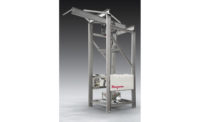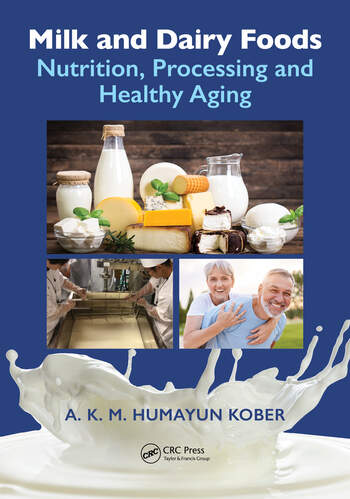TECH FLASH
Valve bag packaging for dry bulk foods: What are you missing out on?
Improvements in valve bag packaging have made the systems popular in Europe, but US manufacturers may still see them as messy or unreliable.


|
| Valve bag systems can be more reliable and less messy than their open-mouth counterparts. Source: Haver Filling Systems. |
First introduced in the mid-1920s, valve bags have traditionally had a slightly higher cost than open-mouth bags. They also have had a reputation for being messy and failing to provide reliable seals, leading to growth in the popularity of open-mouth bags.
However, the cost difference between the two has practically disappeared. And advancements in valve bags and valve bag packaging machine technology have created cost-savings for manufacturers in the form of decreased cleaning, more accurate filling and dosing, more secure seals, more efficient palletizing and storage, and increased packaging speeds.
In recent years, many European mills and flour manufacturers have switched to valve bags, but few US mills and flour manufacturers have followed suit, possibly putting themselves at a competitive disadvantage. We spoke with Rim Boltong of Haver Filling Systems, Inc. to learn what US manufacturers may be missing out on.
FE: In the past, sealing problems were a major complaint from manufacturers using valve bags. How has valve bag sealing become more effective, and how can it reduce costs?
Boltong: Many early valve bags were self-sealing, meaning they were held closed by the force of the product in the bag, but they did not provide a food-grade seal. Today, the most advanced sealing process for valve bags is ultrasonic sealing, which creates a hermetic seal that prevents the flow of air and moisture into a package.
Ultrasonic sealing uses high-frequency sound waves that melt the plastic film bag material by vibrating the molecules to a point where heat is generated from the inside out. Even though ultrasonic sealing produces enough heat to seal a bag, it does not generate external heat like traditional heat sealers. In fact, the seal is cool to the touch immediately after sealing. Reducing the amount of external heat that is produced during sealing reduces facility cooling costs.
Since the seal area is smaller than that of open-mouth bags, an ultrasonic seal on a valve bag is more consistent and secure than traditional seals used for open-mouth bags, such as sewn seals. The process of sewing a bag creates holes in the packaging, which allows air and vermin to enter the bag. With ultrasonic sealing, no punctures are necessary to create a seal.
FE: Dust prevention and control are crucial in dry bulk operations. Can valve bags help manage facility dust?
Boltong: Even though there are numerous state-of-the-art dust collection systems on the market, the best way to keep dry food packaging facilities clean is to control dust at its source. Much of the dust in facilities is created when bags are transported to a sealer after being filled. For packaging machines that have only one sealer downstream, such as a single sewing machine, the time between when a bag is filled and when it is sealed creates an opportunity for product to escape the package.
An improved, dust-free way to package dry bulk food products is to keep the bag at the spout and seal it while it’s there. With the small opening of valve bags, sealing at the spout is possible. Using a filling spout with an inflatable sleeve that seals the area around the bag opening, advanced valve bag packaging machines are capable of producing a hermetically sealed closure with dust-free filling. However, while some valve bag filling machines may appear to seal at the spout, often the bag is removed from the spout, discharged and then sealed. This allows product to escape into the air before the bag is fully sealed.
Valve bag packaging machines that reside in dust-proof enclosures are also available, which provide secondary dust containment to increase plant cleanliness and reduce dust explosion zones. Valve bag packaging machines in dust-proof enclosures also prevent contaminants from entering packaging during filling.
FE: Have valve bag machines made palletizing and storing easier?
Boltong: Valve bag machines with pneumatic, vertical impeller, horizontal impeller and auger filling options provide more control over the densification and deaeration of product, which ultimately impacts palletizing and storage. Valve bag filling produces increased product compaction by filling bags to maximum capacity. This complete filling of a bag creates a block-shaped bag that is easier to stack and store. Block-shaped bags are also less likely to shift during transport and are easier to move with robotic grippers. In contrast, open-mouth bags result in more freeboarding (unfilled space in the bag), which creates bags of varying shapes that are more difficult to stack and transport.
FE: Another commonly cited reason for valve bags’ unpopularity is that filling them takes longer. Have valve bags made advancements in filling speed?
Boltong: High-capacity, multi-spout valve bag filling machines are capable of producing more than 1,600 100-pound bags per hour and over 2,000 50-pound bags per hour.
In addition, valve bag packaging machines with sealers at each spout minimize downtime. If a sealer needs maintenance on a multi-spout machine with only one sealer, production stops completely. Sealers at each spout allow production to continue even if one sealer is offline due to maintenance. Today’s valve bag packaging machines are also capable of filling bags in a wide range of sizes between 25 and 100 pounds, which reduces changeover times.
The bag packaging process is an essential part of the value-added chain in the dry bulk food industry, especially the flour industry. The use of valve bags as a replacement for the well-known open-mouth bags is now a more feasible option than years prior, and US manufacturers may benefit from exploring valve bag options. Combining the right packaging material with the optimum filling technology can help food manufacturers reach the best results in today’s competitive marketplace.
For more information, contact Rim Boltong, Haver Filling Systems (www.haverusa.com) at rim@haverusa.com.
Looking for a reprint of this article?
From high-res PDFs to custom plaques, order your copy today!








